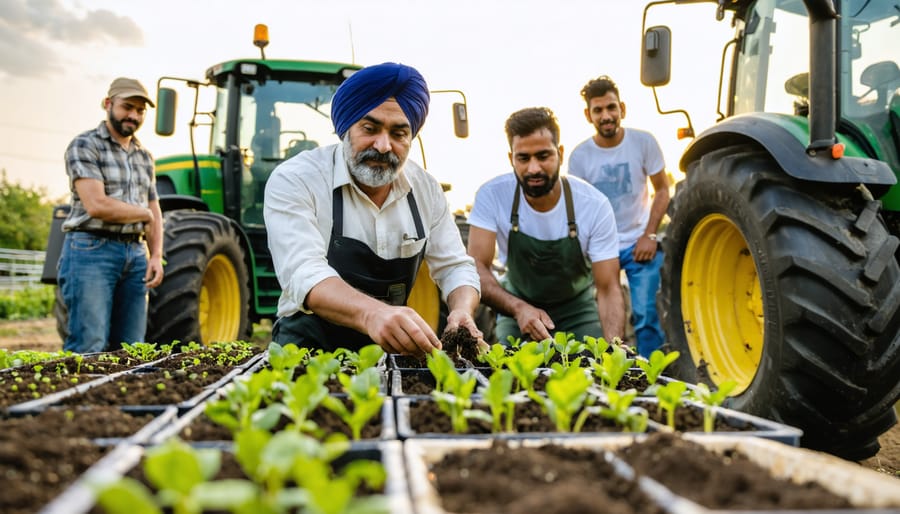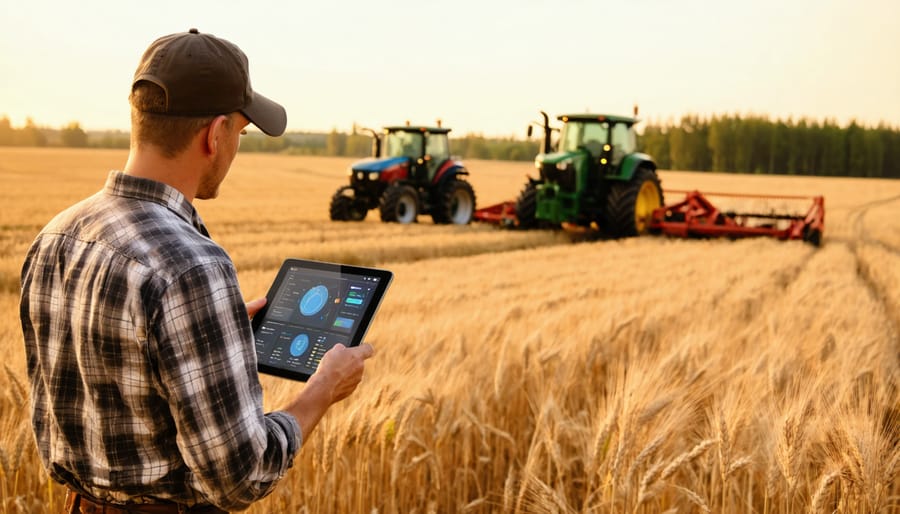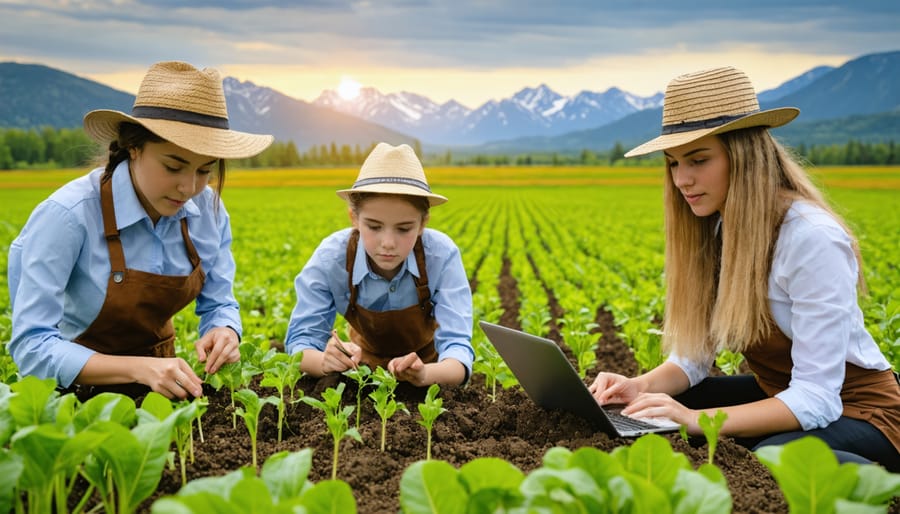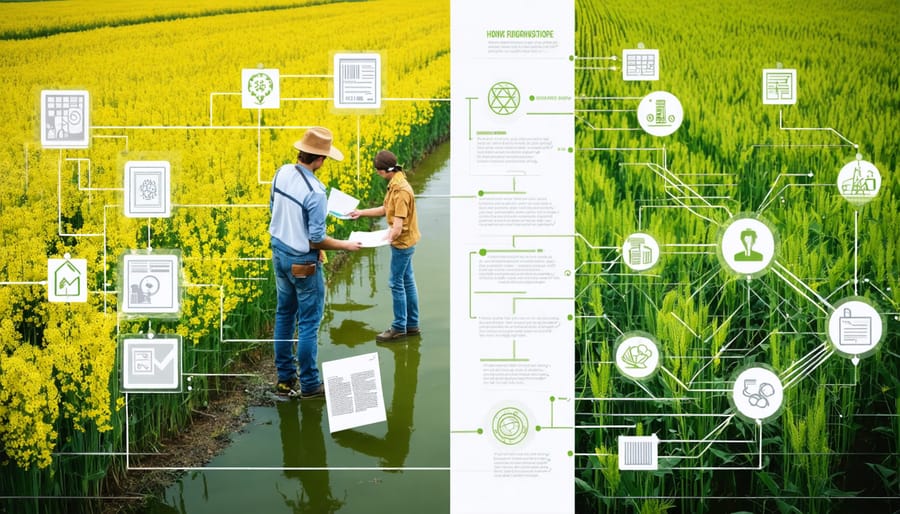Nature’s 3.8-billion-year experiment in agricultural optimization holds the key to revolutionizing modern farming practices. Darwinian agriculture merges evolutionary biology with cutting-edge agricultural science, offering Canadian farmers a powerful framework for developing resilient, high-yielding crop systems that work with natural selection rather than against it.
By studying how wild plants evolved to thrive without human intervention, we’re uncovering ingenious solutions to agriculture’s most pressing challenges. From drought resistance mechanisms developed in prairie grasses to the sophisticated pest defense systems of native species, these time-tested adaptations are transforming how we approach crop breeding and field management across Alberta’s diverse growing regions.
This evolutionary approach to agriculture isn’t just theoretical—it’s delivering practical results for farmers across the Canadian prairies. By implementing farming methods that harness natural selection’s wisdom, producers are reducing input costs, improving soil health, and building more resilient farming operations while maintaining competitive yields. The principles of Darwinian agriculture are proving especially valuable as our agricultural systems face mounting pressures from climate change and evolving pest challenges.
Modern agriculture stands at a crucial intersection between ancient evolutionary wisdom and contemporary innovation. Understanding how natural selection has solved agricultural challenges over millennia enables us to develop more sustainable, efficient farming systems that benefit both producers and the environment.
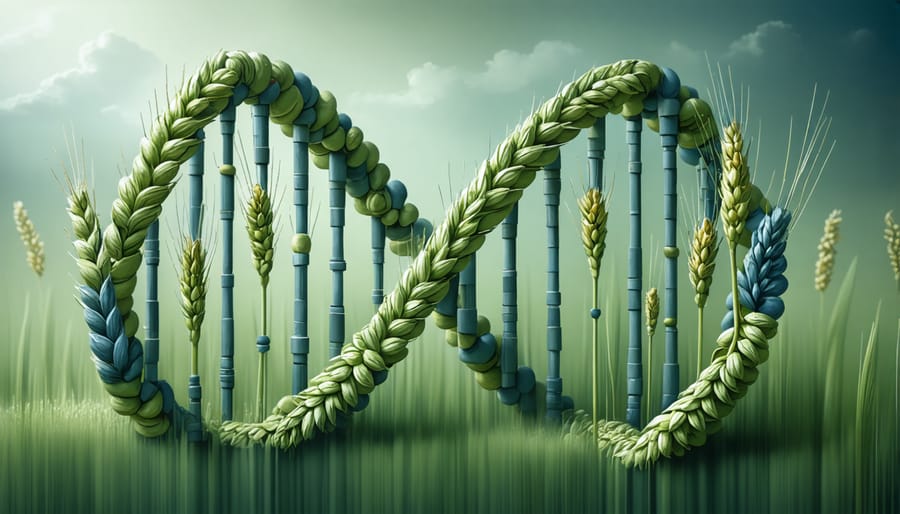
Nature’s Blueprint: Why Darwinian Principles Matter in Agricultural Learning
Adaptation in Action: Learning from Alberta’s Ecosystem
Alberta’s natural ecosystems offer valuable lessons in agricultural adaptation. The province’s native grasslands, which have evolved over thousands of years, demonstrate remarkable resilience to extreme weather conditions, pest pressures, and soil variations. Local farmers like Sarah Henderson from Sturgeon County have successfully integrated these natural adaptation strategies into their operations.
Henderson observed how native grasses maintain productivity despite minimal external inputs and adapted this principle to develop a low-intervention crop rotation system. Her approach reduced input costs by 30% while maintaining yield stability during drought years.
The Medicine Hat region’s dryland farming community has taken cues from natural prairie ecosystems, implementing diverse crop selections that mirror the variety found in native plant communities. This strategy has proven particularly effective during the challenging 2021 growing season, with participating farms reporting 25% better drought resistance compared to conventional monoculture systems.
These local success stories demonstrate how observing and applying nature’s time-tested solutions can enhance farm resilience. The key lies in understanding local ecosystem patterns and adapting these principles to modern agricultural needs.
Evolution of Knowledge: From Traditional to AI-Enhanced Learning
Agricultural education has transformed dramatically over the past decades, mirroring the evolution we see in nature itself. Traditional knowledge-sharing methods, like mentorship and hands-on experience, while still valuable, are now being enhanced by sophisticated learning technologies. The emergence of the digital agriculture revolution has introduced adaptive learning systems that help farmers make better decisions based on real-time data and historical patterns.
In Alberta, farming communities are embracing this shift through innovative learning platforms that combine local wisdom with AI-powered insights. These systems analyze weather patterns, soil conditions, and crop performance, helping farmers adapt their practices more effectively. Much like natural selection, successful farming techniques are identified, shared, and refined through these platforms.
The beauty of this evolution lies in its accessibility. Whether you’re a multi-generation farmer or new to agriculture, these learning tools democratize knowledge while respecting traditional practices. They create a bridge between time-tested farming wisdom and cutting-edge agricultural science, ensuring that valuable insights are preserved and enhanced for future generations.
How AI Personalizes Your Farm Learning Experience
Smart Learning Pathways for Different Farm Types
Modern farming operations vary significantly across Alberta’s diverse landscape, and AI-powered farming tools are now capable of tailoring learning experiences to match specific farm types and conditions. Whether you’re managing a grain operation near Red Deer or running a mixed farm in the Peace Country, these smart systems analyze your unique circumstances to deliver relevant guidance.
The learning pathways consider factors such as soil type, local climate patterns, and available equipment to create personalized recommendations. For instance, a dairy farmer in central Alberta will receive different insights than a crop farmer in the southern regions, with content adapted to their distinct challenges and opportunities.
These adaptive systems also factor in seasonal variations and market conditions. During seeding time, the focus might shift to optimal planting strategies, while harvest season brings attention to equipment efficiency and crop storage solutions. The technology continuously learns from local success stories and shared experiences, creating a knowledge network that benefits the entire farming community.
What makes these pathways particularly valuable is their ability to integrate historical farm data with real-time conditions. A farmer in Lethbridge might receive different recommendations than their counterpart in Grande Prairie, even if they’re growing the same crop, based on their specific environmental conditions and resource availability.
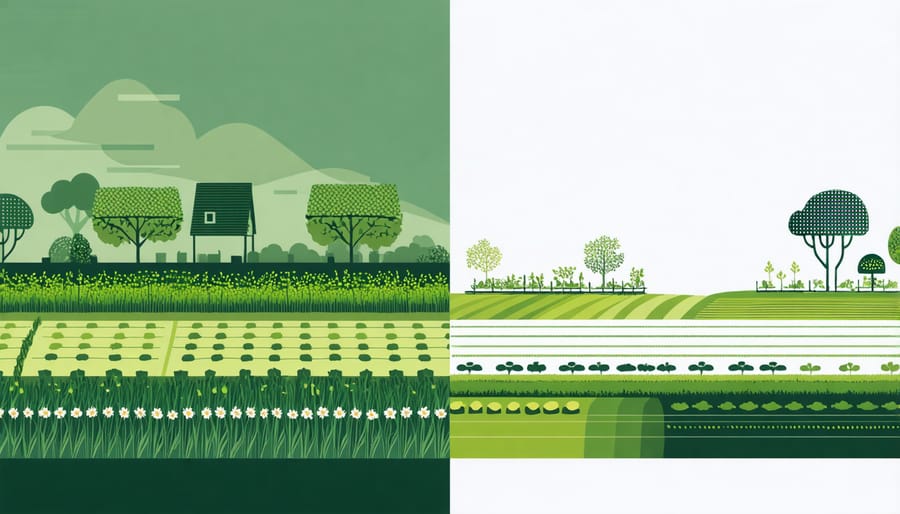
Real-Time Adaptation: Learning That Grows With You
In the heart of Alberta’s farming community, we’re witnessing a remarkable transformation in how AI systems learn and adapt alongside farmers. Take the case of Sarah Thompson, a third-generation farmer near Lethbridge, who’s been using an AI-powered crop management system that’s grown more accurate with each passing season. The system began by offering basic suggestions for irrigation timing but now provides detailed recommendations based on her specific soil conditions, local weather patterns, and historical crop performance.
These AI systems are constantly evolving through what we call “feedback loops.” When farmers input their daily observations and outcomes, the system refines its recommendations. For instance, at the MacKenzie Farm in Red Deer, their AI system has learned to predict pest outbreaks with 85% accuracy after two years of continuous feedback from field observations.
The beauty of this adaptive learning lies in its locality. What works in Drumheller might not apply in Peace River, and these systems understand that. They’re designed to recognize regional differences in soil composition, rainfall patterns, and growing seasons. The more farmers interact with these systems, the more localized and precise their suggestions become.
Most importantly, this technology respects and incorporates generations of farming wisdom. It doesn’t replace farmer knowledge; it enhances it by combining traditional practices with data-driven insights, creating a truly collaborative approach to modern agriculture.
Success Stories: Alberta Farmers Embracing Adaptive Learning
From Skeptic to Champion: The Morrison Family Farm Story
Jim Morrison admits he was initially skeptical when his son suggested implementing AI-driven learning systems on their family farm near Olds, Alberta. “I’ve been farming for 35 years, and I thought I knew everything there was to know about crop rotation and soil management,” he recalls with a chuckle.
After attending a local agricultural tech workshop in 2021, the Morrisons decided to start small, implementing AI soil analysis on their 400-hectare canola field. The system used historical data, weather patterns, and real-time soil conditions to suggest optimal planting times and nutrient applications.
The results exceeded their expectations. Within one growing season, they saw a 15% increase in yield and a 20% reduction in fertilizer use. “The system learned from our land’s specific conditions and helped us make better decisions than we ever could with traditional methods alone,” explains Sarah Morrison, Jim’s daughter-in-law and the farm’s technology coordinator.
Today, the Morrison Family Farm serves as a demonstration site for other Alberta farmers interested in AI-driven agriculture. “We’ve gone from questioning the technology to championing it,” Jim says. “It’s not about replacing farmer knowledge—it’s about enhancing it.”

Community Learning Networks: The Prairie Innovation Hub
In the heart of Alberta’s agricultural landscape, the Prairie Innovation Hub has emerged as a powerful example of how collective learning enhances sustainable farming practices. Farmers across the region are coming together to share experiences, data, and insights about their successes and challenges with Darwinian agriculture principles.
The Hub operates through a network of local study groups, online forums, and seasonal field days where farmers can witness firsthand how their peers are implementing evolutionary-based approaches. These collaborative spaces allow producers to learn from each other’s experiments with crop diversity, natural selection processes, and adaptive management techniques.
What makes this network particularly effective is its emphasis on practical knowledge exchange. When one farmer discovers a successful method for increasing crop resilience or reducing input costs through natural selection, that information quickly spreads throughout the community. The Hub also partners with agricultural scientists and researchers who provide guidance while learning from farmers’ real-world experiences.
Regular workshops and mentorship programs help newcomers understand how to apply Darwinian principles to their operations. This community-driven approach has accelerated the adoption of evolutionary farming practices across the prairies, proving that collective wisdom can significantly enhance individual success in agriculture.
Implementing AI Learning on Your Farm
First Steps: Choosing Your Learning Platform
Starting your journey into Darwinian agriculture begins with selecting the right tools for learning. Today’s digital learning platforms offer Alberta farmers flexible options to understand and implement evolutionary principles in their farming practices.
Consider starting with established agricultural apps that focus on crop evolution and adaptation. These platforms often include features like soil analysis tools, weather pattern tracking, and crop rotation planning that align with Darwinian principles. Many Alberta-based agricultural institutions offer free online courses specifically designed for our local growing conditions and challenges.
Look for platforms that provide community features where you can connect with other farmers in your region. This peer-to-peer learning approach has proven particularly effective for farmers transitioning to evolutionary-based methods. The Alberta Farm Knowledge Network, for instance, offers both structured courses and informal discussion groups where you can share experiences and learn from others who are implementing Darwinian farming techniques.
Remember to choose platforms that offer offline access, considering rural internet connectivity, and those that provide regular updates based on current research and seasonal changes.
Building Your Knowledge Base
Start by creating a digital or physical journal dedicated to your Darwinian agriculture journey. Document your observations, experiments, and outcomes throughout the growing seasons. Consider using a simple spreadsheet to track key metrics like soil health, crop yields, and adaptation strategies that work best in Alberta’s unique climate.
Connect with local agricultural extension offices and join farmer study groups in your area. The Alberta Farm Knowledge Network offers regular workshops where you can share experiences and learn from fellow farmers who are implementing evolutionary principles in their operations.
Develop a systematic approach to collecting and organizing information. Create categories for different aspects of your operation, such as pest management, soil biology, and crop rotation. Take photos throughout the season and maintain detailed notes about weather patterns and their effects on your crops.
Consider partnering with agricultural researchers at institutions like Olds College or the University of Alberta. Their expertise can help you understand the scientific principles behind Darwinian agriculture while contributing to broader research initiatives.
Remember to regularly review and update your knowledge base, especially after each growing season. This helps identify patterns and refine your approach based on what works best for your specific conditions.
Measuring Success: Track Your Learning Evolution
To effectively track your progress in implementing Darwinian agriculture principles, start by establishing clear baseline measurements of your current practices and outcomes. Document key indicators like soil health, crop diversity, and yield statistics. Create a detailed logbook or use digital tools for smart data implementation to monitor changes over time.
Set realistic quarterly goals and review them regularly. Consider tracking metrics such as water usage efficiency, pest resistance levels, and the percentage of native species integration. Take regular soil samples and keep photo records of your fields throughout different seasons.
Connect with local farming groups to share experiences and compare notes. Many Alberta farmers find success through collaborative learning and data sharing. Consider joining regional agricultural monitoring networks that provide comparative data across similar operations.
Remember that success isn’t just about numbers – observe qualitative changes too. Notice improvements in soil structure, beneficial insect populations, and overall ecosystem health. Adjust your strategies based on what the data and your observations tell you, always keeping the principles of natural selection and adaptation in mind.
Throughout Alberta and across Canada, farmers who have embraced evolutionary learning approaches in agriculture are witnessing remarkable results. By understanding and applying Darwinian principles to crop development and farming practices, our agricultural communities are building more resilient and sustainable food systems.
The benefits of this approach are clear and multifaceted. Crops developed through evolutionary breeding methods show improved adaptation to local climate conditions, enhanced disease resistance, and better drought tolerance. For instance, several wheat varieties developed in Southern Alberta using evolutionary principles have demonstrated exceptional resilience during recent dry seasons, while maintaining high yield potential.
Beyond crop improvements, evolutionary learning has revolutionized our understanding of soil health and ecosystem management. Farmers report reduced input costs, improved water efficiency, and stronger natural pest resistance when working with, rather than against, natural selection processes. This approach has proven particularly valuable as our climate continues to change, offering a practical pathway to agricultural adaptation.
The community aspect of evolutionary learning in agriculture cannot be overlooked. Through farmer-to-farmer networks and collaborative research initiatives, traditional knowledge combines with scientific understanding, creating innovative solutions that benefit everyone. This collective learning approach has become a cornerstone of sustainable agriculture in our region.
Looking ahead, the integration of Darwinian principles in agriculture offers a promising future for Canadian farming. As we continue to face environmental challenges, these methods provide practical, science-based solutions that respect natural processes while maintaining productive and profitable farming operations. By embracing these evolutionary approaches, we’re not just farming better today – we’re securing a more sustainable agricultural future for generations to come.


